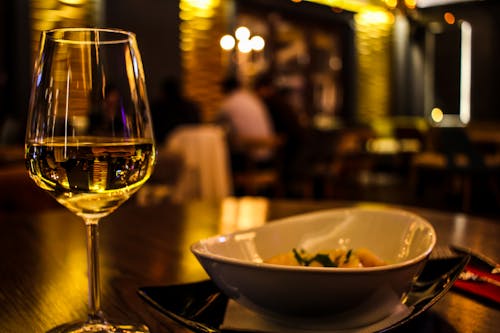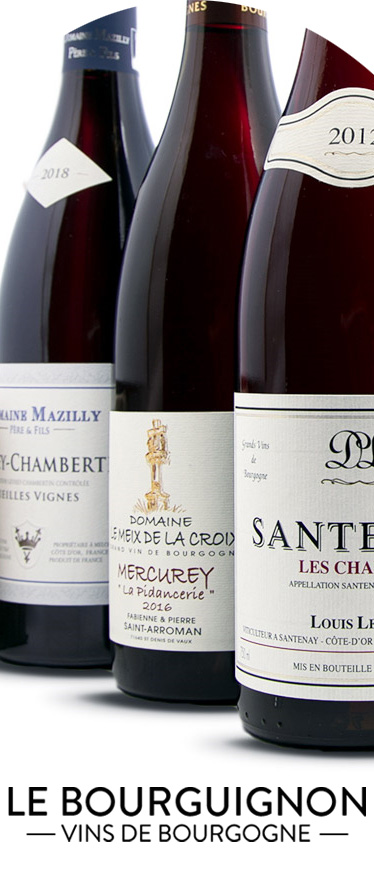Marsannay: the gateway to the Côte de Nuits
Marsannay extends over three communes (Chenôve, Marsannay-la-Côte and Couchey) in Côte de Nuits in the Côte d'Or department in Burgundy.
On May 19, 1987, the Marsannay appellation was created, one of the most recent AOCs in Burgundy and the only one offering the three colors : red, rosé and white. In total this represents an area of 222 hectares, 153 hectares for red wines, 35 hectares for rosé wines and 34 hectares for white wines.
=> Particularity for this communal appellation since it is the only appellation to produce rosé wines in the Côte de Nuits.
The Climates to follow …
Currently the Marsannay appellation does not include climates classified as premier cru, which is why in 2012 the organization of defense and management of the AOC marsannay was filed an application on thirteen climates of the appellation with the INAO (National Institute of Quality and Health), this would make it possible to highlight certain crus of the appellation and save the terroirs!
The thirteen climates of the Marsannay appellation wishing to be in premier cru:
- Clos du Roy (one of the oldest terroirs in the area)
- In the Mountains
- The Sparrows
- The Echezots
- Charm to priests
- The Boivins
- Les Grasses Têtes
- Clos de Jeu
- The Favières
- Fields- Solomon
- In Les Genelières
- The Clos
- Champ-Perdrix (the best terroir, facing south)
Will the #marsannay have its first growth? #vin #wine http://t.co/tg9EstAnph #viticulture pic.twitter.com/xK42Glzz4q
— The Public 🗞️ Good (@Lebienpublic) October 1, 2014
Soil
In general, the marsannay vines are located on gentle slopes that allow good natural drainage, between 225 and 390 meters above sea level. The climate is temperate with a continental tendency, the cooler air causes a later maturation of the wine, with exposures ranging from full sunrise to noon.
Its soils are of great diversity, composed of old limestone rocks, frost resistant, marl dating from the Jurassic, brown and dry, with pebbles and gravel.
The higher you go up on the hillsides, the thinner the layer of earth, the soil is brown and draining, ideal for more structured wines .
📸 The images of this morning in the vineyards of Marsannay-la-cote. Straw fires were lit to combat the frost. #gel #vin #wine #burgundy credit Laurence Ollivier pic.twitter.com/k895ldV9v7
— Nicolas Durdilly (@NicolasDurdilly) April 14, 2019
Tasting

The grape variety used in the production of red wine and rosé wine is Pinot Noir.
The red wines of the Marsannay appellation (65% of the production) have an intense red color, over time the color evolves towards a bluish garnet hue, an expressive bouquet of red fruits (cherry, strawberry,…), black fruits (wild blackberry, blackcurrant, blueberry,…), dried fruits (prune,…), in the mouth a beautiful powerful attack, generous and a good length.
It will go perfectly with red meats (shallot tab, beef rib with marrow,…), river fish (pike, pike perch,…), cheeses made from cow's milk as well.
The excellent red wines of Marsannay can age between ten to fifteen years (for the best years) in the cellar, this will bring animal notes (musk, leather,…), plants (moss, undergrowth,…) and spices.
The recommended operating temperature is 15 to 17°C.
The rosé wines of the Marsannay appellation (25% of the production) have a very beautiful color that pulls on the slightly orange gooseberry with carmine reflections, a tender nose, greedy, evoking notes of white peaches, flowers; in the mouth a beautiful vivacity all in power and freshness in the finish. Very appreciated by tasters.
This wine will go very well with a salad, a grill, a white meat, cold cuts, a fish like a mullet and many others. For lovers of Mediterranean or spicy cuisine, the combination is perfect!
The recommended serving temperature is 12 ° C, the aging potential of a rosé is two years in general.
***
The grape variety used in the production of white wine is Chardonnay and sometimes Pinot Blanc
The white marsannay (10% of the production) are of a pale white gold, with reflections of lime color, an open and frank nose, aromas of exotic fruits (pineapple,…), citrus (lemon,…), white flowers (hawthorn, acacia,…), in the mouth a great flexibility, ample, round and of remarkable persistence.
Very pleasant to drink in the first years, patience will reveal all the typicity of its terroir up to 8 to 10 years for the best vintages. The recommended operating temperature is between 12 and 13 °C.
This wine will be accompanied wonderfully with white meats such as a cream poultry, a filet mignon with mustard sauce, a veal blanquette, sea fish, goat cheeses,… and for surprising pairings, oriental cuisine or sushi, it will bring an incredible balance with wine.
Let yourself be tempted by a bottle, you will not be disappointed. Several areas to discover on lebourguignon


